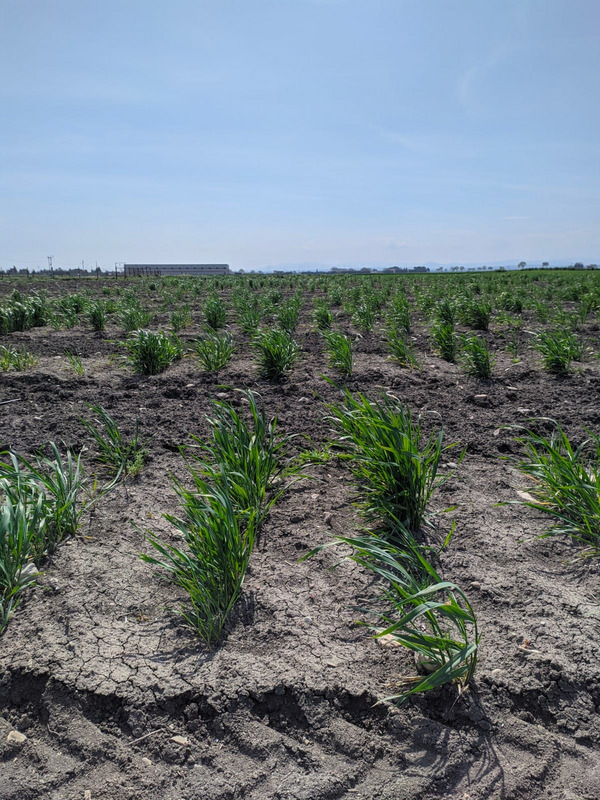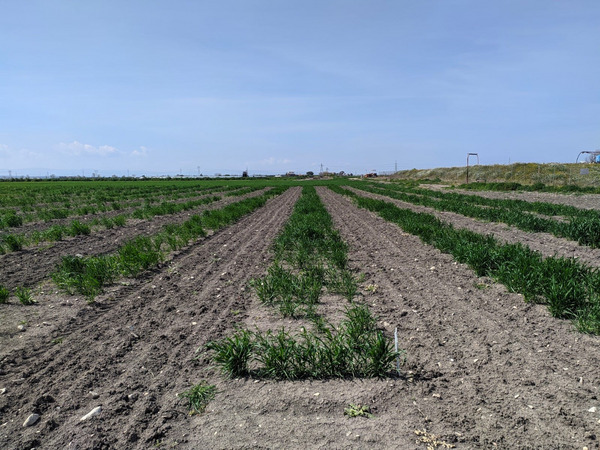Two wheat diversity panels, 200 accessions of bread wheat and 250 of durum wheat, have been assembled from existing collections contributed by the partners. The aim was to represent the vast genomic and phenotypic diversity worldwide. Several hundred new genotypes issued from selected crosses were obtained by accelerating the time to obtain pure lines (doubled haploids and single-seed descent techniques, more information available on request) and growing in the field (Figure 1 and 2) and growth chamber. They are ready to be characterised genotypically, then phenotypically, to test the validity of the adopted genomic selection strategy. The process started in 2017, the first year of the SolACE project.
In 2017 and 2018, field trials were run with the bread and durum wheat panels at different sites in Italy and France to collect data on yields and other agronomic traits under combined, nitrogen and water stress. SolACE took advantage of the expertise in root phenotyping of two high-throughput phenotyping platforms at INRAE-Agroécologie Dijon (France) and UCLouvain – Université Catholique de Louvain (Belgium). Using these platforms, the project could unravel the diversity of the two wheat panels for different root development characters (angles, branching, density, length, depth, biomass, etc.). Wheat plants were grown in transparent “containers”, called Rhizotubes, in the 4PMI platform in Dijon, and under aeroponic conditions in the RootPhAir platform in Louvain. Massive root imaging and analyses were performed.
The principle of genomic selection is to estimate the effect of DNA-level variations on phenotypes. These effects are then used to predict the genetic value of new unphenotyped genotypes. To do this, the root data, plus available information on markers distributed along the genome (Single Nucleotide Polymorphism, SNP), were used to feed a genomic selection model. For both species, the reference model was RR-Blup. This model was then applied to predict the root traits of other genotypes for which only the marker information was available. This method may save time and money, as root traits are challenging to acquire.
Genomic selection models were first used to identify complementary parents for root parameters, like “root/shoot biomass”, “length of seminal root”, and “root angle”. Thirteen crosses of durum wheat at CREA and nine of bread wheat at INRAE Clermont-Ferrand were made in 2019. After multiplication, we now have about 500 offspring of each species. Their genome will be characterised using the same SNP markers that were used to build the genomic selection models. We will then predict the root traits for all of the offspring and select 10 genotypes thought to be the best and 10 thought to be the worst.
We are curious to know whether this innovative strategy can improve wheat for beneficial root traits. For this, we will have to wait for validation trials that are to be carried out in the following months. If validated, genomic selection will help improve wheat for grain yield under combined, mild nitrogen and water stress observed in the main cultivation areas in Europe.




 tap and then scroll down to the Add to Home Screen command.
tap and then scroll down to the Add to Home Screen command.
Disqus
In order to use the comment function, you must register with the third-party provider "Disqus".
When you activate this function, your browser establishes a direct connection with the servers of the third-party provider. We would like to point out that data is transmitted to the third-party provider after activation, and the latter may set cookies that can also be used for analysis and marketing purposes. For more information, please refer to our privacy policy.
Activate